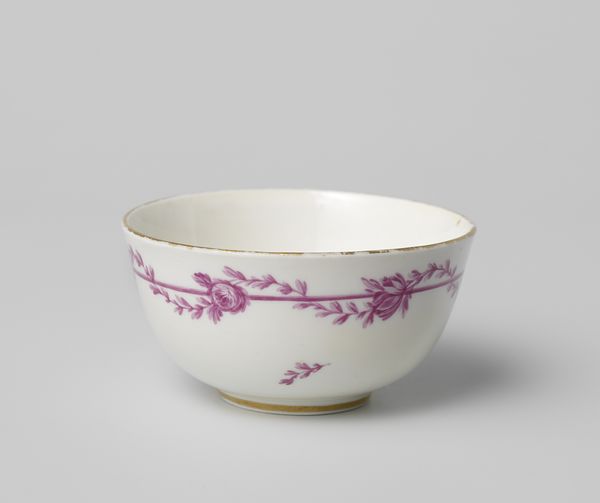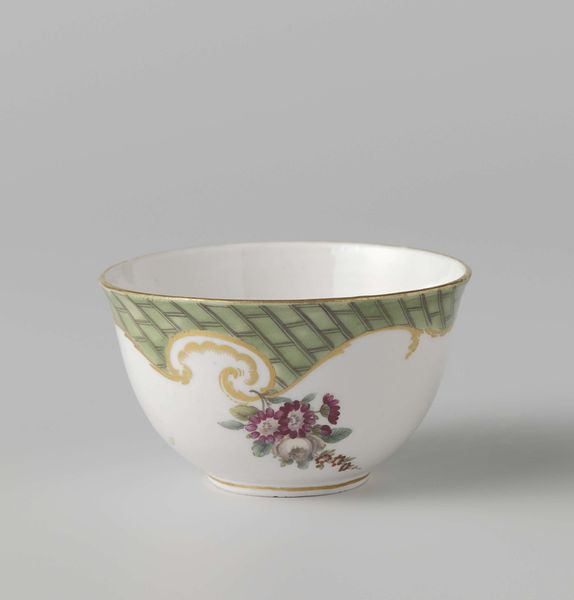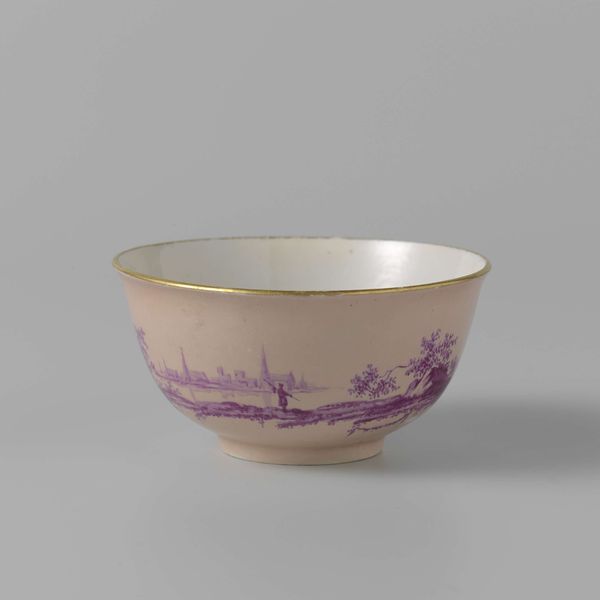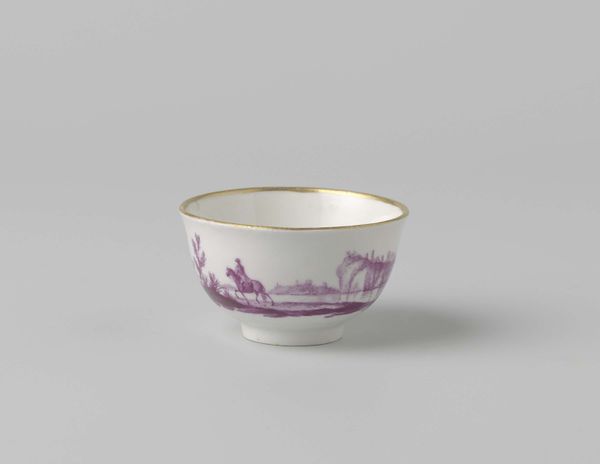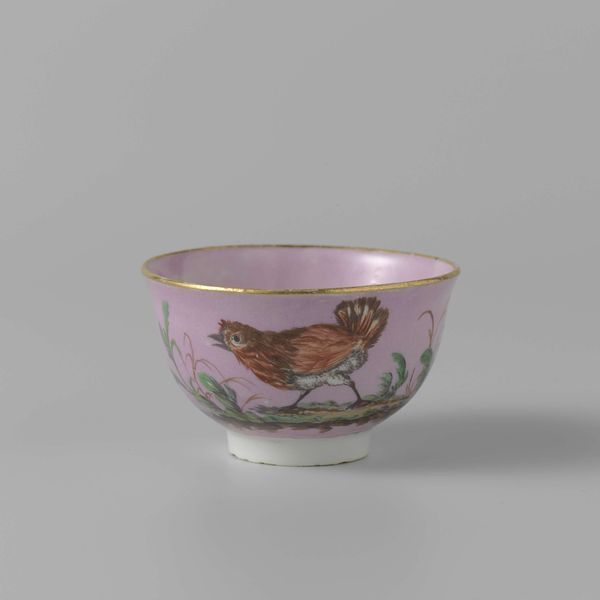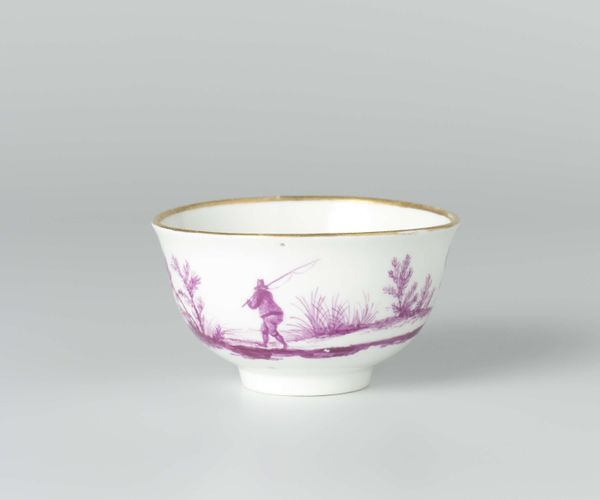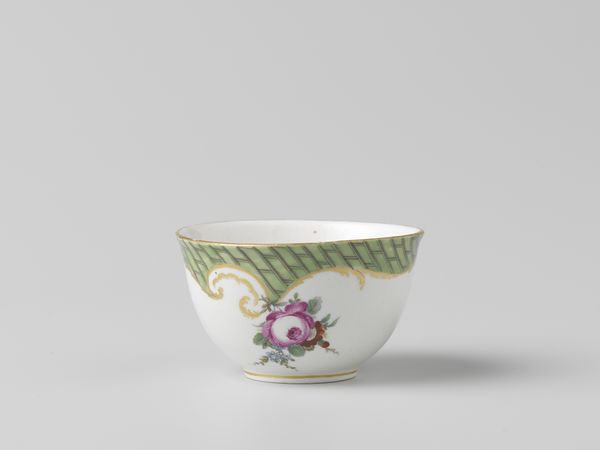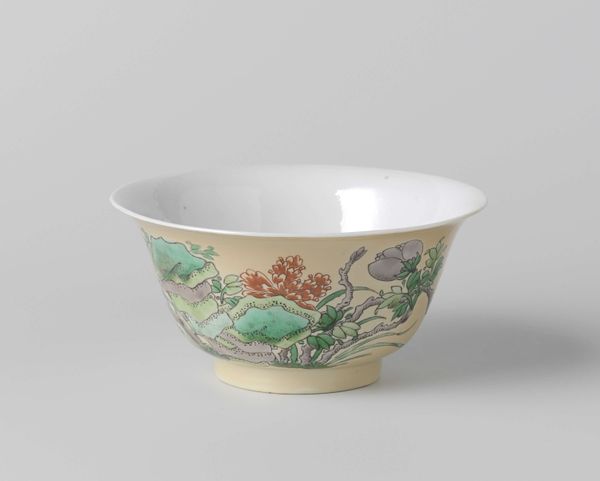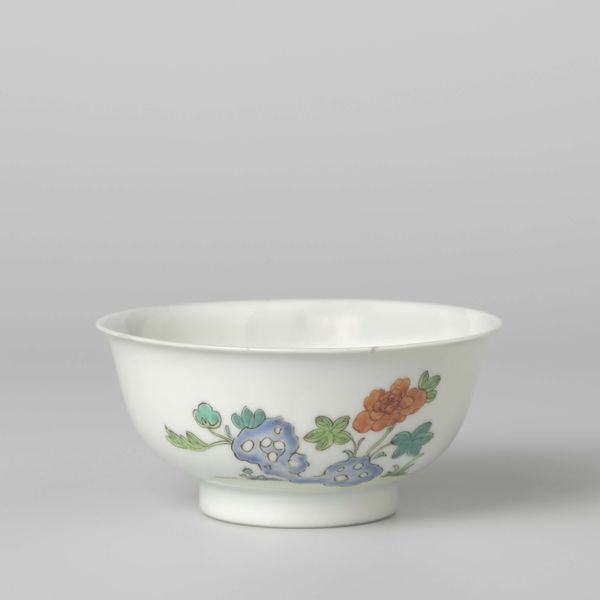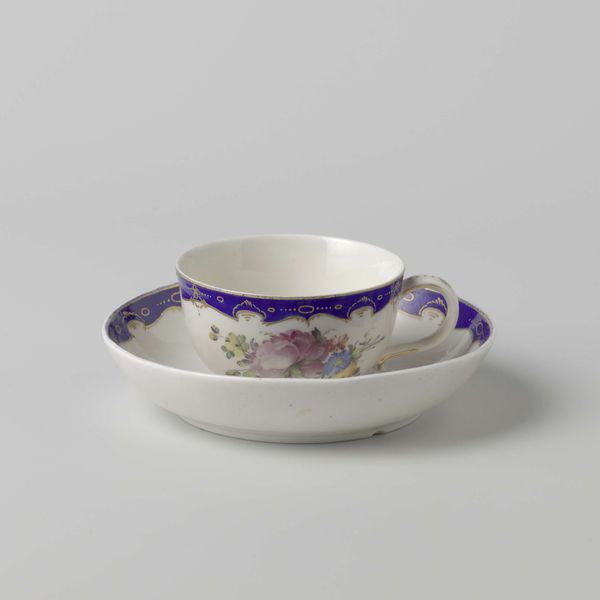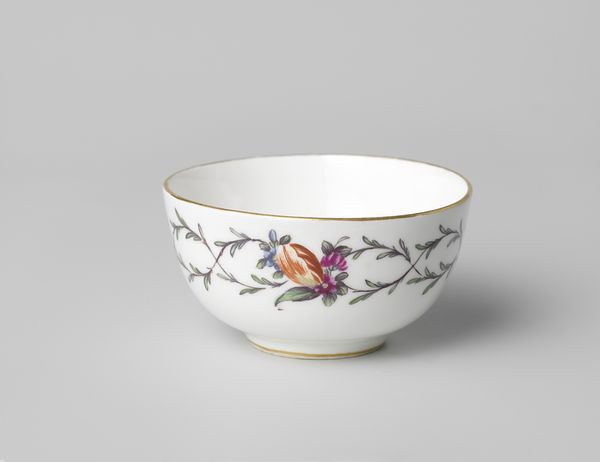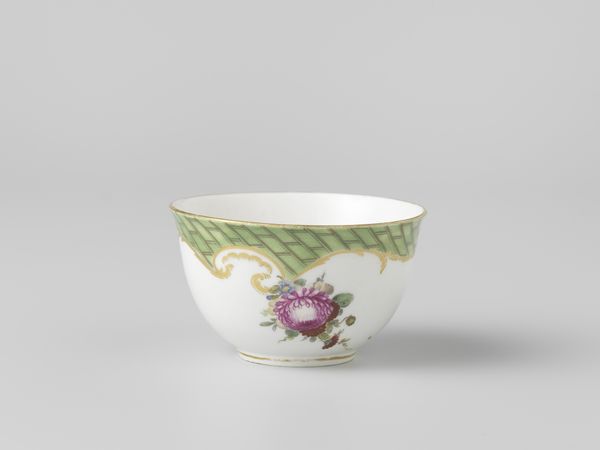
Dimensions: height 4.0 cm, diameter 7.5 cm, height 2.0 cm, diameter 12.5 cm
Copyright: Rijks Museum: Open Domain
Curator: I find this porcelain cup made around 1772 at the Loosdrecht factory utterly charming. Its formal title is "Kop van porselein, met een rose-violet fond." Editor: My goodness, it’s small. The lavender glaze is soothing, but I confess the miniature figures surrounding the exterior are... odd? Is that woman wearing a bird on her head? Curator: Ah, yes! It’s very much in the Rococo taste, reflecting the fashion and artistic whims of the elite during that period. Headwear was certainly extravagant, to put it mildly. But it is not just any lady. We are talking about representations of royalty, possibly from contemporary theatre. Editor: So, it's commenting on celebrity and spectacle? Given that porcelain production was tied to colonial extraction and class hierarchies, are we supposed to see this as playful or complicit in power dynamics? Curator: Porcelain manufacturing was indeed intensely competitive, especially at this time. Loosdrecht, like other European factories, sought to emulate the prized porcelain from Asia, becoming symbols of national prestige and wealth. Editor: And genre scenes from theatre become another way to reinforce societal values? It’s all meticulously crafted, that is sure. I am interested in how this miniaturization renders a grand narrative into the domestic sphere. Curator: Precisely. The scale invites intimacy and perhaps also ownership. A tiny symbol that connects its owner with that broader cultural and political theater, but that also reminds one about the implicit issues about ownership we deal with today, of these stolen artifacts of old world luxury and privilege. Editor: Thinking about who commissioned this, and who would have drunk tea from it... it gives one pause. To sip from something laden with such a complex history. Even such a delicate cup as this holds some hefty baggage, wouldn't you agree? Curator: I think that we learn something more profound and nuanced about that world by considering its context within the larger historical perspective. Editor: It invites us to reckon with some tough, ongoing stuff. I won't look at a porcelain cup in the same way.
Comments
No comments
Be the first to comment and join the conversation on the ultimate creative platform.
